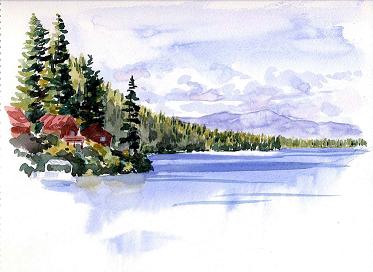| |

Plasmid Biology
September 23-27, 2006
Stanford Sierra Conference Center, Fallen Leaf Lake, South Lake Tahoe, California
The Plasmid Biology 2006 conference will take place at the Stanford Sierra Conference Center at Fallen Leaf Lake in South Lake Tahoe, California, September 23-27, 2006.
Plasmids are extrachromosomal elements that are either covalently closed circular or linear, single- or double-stranded nucleic acid molecules. The term plasmid was coined by Lederberg in 1952, when it was realized that extrachromosomal genetic "particles" or "elements" were co-residing with the chromosome. Both DNA and RNA plasmids exist in nature. DNA plasmids in microorganisms can range in length up to and probably exceeding 2,400 kilobase-pairs, the latter size exceeding that of some genomes of lower prokaryotes such as mycoplasmas and spirochetes. RNA plasmids termed riboplasmids are usually smaller than 500 base-pairs, with the smallest containing only an origin of replication and no open reading frames. Plasmids confer on the host organism various attributes the promote successful habitation of a particular niche and environment.
Because of a relaxing retreat-like environment that is remotely located, the Plasmid Biology conference offers the unique opportunity for both experienced workers and new comers to interact and exchange valuable thoughts, ideas and information as well as establishing scientific cooperation and collaborations.
The organizers of this conference are Clarence Kado (University of California, Davis) and Donald Helinski (University of California, San Diego). The International Advisory Board is comprised of Manuel Espinosa (Spain), Laura Frost (Canada), Donald Helinski (U.S.A.), Clarence Kado (U.S.A.), Saleem Khan (U.S.A.), Jan Nesvera (Czech Rep.), David Romero (Mexico), Patricia Sobecky (U.S.A.), and Christopher M. Thomas (U.K.),
For more information about the conference venue, please click on the following link http://www.stanfordalumni.org/learningtravel/sierra/sierra-center/home.html .
Sponsored by the International Society for Plasmid Biology and Mobile Genetic Elements (ISPB). This international symposium is sponsored by the National Institutes of Health, the National Science Foundation, the Office of Research and the College of Agricultural and Environmental Sciences, University of California, Davis and European Molecular Biology Organization
|
|